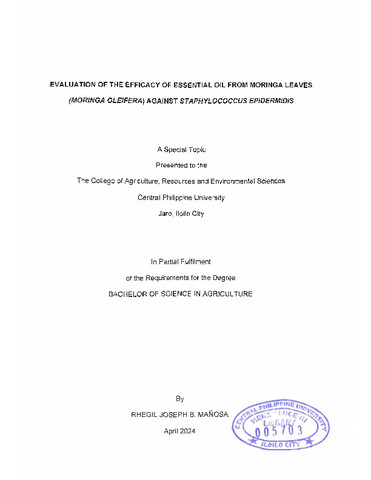Horticultural characterization of AVRDC moringa germplasm in the Philippines and Taiwan

Request
Request a full text copyPage views
568Date
2015-12-06Share
Metadata
Afficher la notice complète
Résumé
The major objective of this study was to evaluate a subset of the AVRDC Moringa oleifera germplasm collection for important horticultural traits in the Philippines and Taiwan. The 18 AVRDC moringa accessions originated from India, Laos, Philippines, Taiwan, Tanzania, Thailand and USA. Three-month-old seedlings were transplanted onto single-row raised beds spaced 1.5 m apart. Plants were arranged in a randomized block design with three replications. Data were collected on plant height, stem diameter, number of branches, canopy width, fresh and dry biomass (stems and leaves), days to flowering, and pod/seed yield. In Taiwan, one month after transplanting four accessions attained a plant height of above 1 m. Number of side branches ranged from 9 to 14 per plant. Differences in plant height and stem diameter were significant at 70 days after transplanting (DAT). Tallest plants (2.9 m) were observed in LSQUOMo-35RSQUO from Tanzania while LSQUOMo-8RSQUO from Thailand produced the largest stem diameter (36 cm). Leaf fresh weight and dry biomass was highest (15.8 and 9.2 t ha-1, respectively) for LSQUOMo-35RSQUO at 70 DAT. Survival and stand count decreased after two strong typhoons and severe flooding in 2009 and 2010. In the Philippines, accessions LSQUOMo-2RSQUO (USA) and LSQUOMo-40RSQUO (India) produced the tallest plants 28 weeks after second pruning. Mean stem diameter ranged from 3.5 cm (LSQUOMo-34RSQUO) to 8.5 cm (LSQUOMo-4RSQUO). LSQUOMo-38RSQUO (Thailand) produced the highest number of branches. Two accessions from Thailand (LSQUOMo-4RSQUO and LSQUOMo-14RSQUO) resulted in the highest leaf fresh weight, which exceeded 20 t ha-1 from two prunings, while LSQUOMo-29RSQUO (India) produced the highest dry leaf biomass. Most accessions tolerated waterlogged conditions with 60-100% plant survival stand count. The results indicate that there are moringa accessions with promising horticultural traits for the high rainfall climate of Southeast Asia.
Description
Conference paper
Suggested Citation
Palada, M. C., Patricio, H. G., Ebert, A. W. and Wu, D. L. (2015). Horticultural characterization of AVRDC moringa germplasm in the Philippines and Taiwan. In Keatinge, J. D. H. , Srinivasan, R. & Mecozzi, M. (Eds.), XXIX International Horticultural Congress on Horticulture: Sustaining Lives, Livelihoods and Landscapes (IHC2014): International Symposium on Promoting the Future of Indigenous Vegetables Worldwide (pp. 93-98). International Society for Horticultural Science. https://doi.org/10.17660/ActaHortic.2015.1102.11
Type
Conference paperISSN
0567-7572; 2406-6168ISBN
978-94-62610-89-7Sujet
Keywords
Série
ISHS Acta Horticulturae;1102Collections
- Conference papers [17]
Related items
Showing items related by title, author, creator and subject.
-
A study on the nutritional quality of Moringa oleifera and Moringa peregrina
Palada, Manuel C.; Patricio, Hope G.; Deloso, Homer E.; Paret, Mathews; Garcia, D. E. (International Society for Horticultural Science, 2021-04-15)A study was conducted to determine and compare the growth characteristics and nutritional quality of <em>M. oleifera</em> and <em>M. peregrina</em>. Three moringa cultivars consisting of two <em>M. oleifera</em> cultivars ... -
Evaluation of the efficacy of essential oil from moringa leaves (Moringa oleifera) against Staphylococcus epidermidis
Mañosa, Rhegil Joseph B. (2024-04)Staphylococcus epidermidis is a coagulase-negative and gram-positive bacterium that can cause arthritis, tendinitis, tenosynovitis, osteomyelitis and omphalitis in poultry animals. It is the most common cause of nosocomial ... -
Brooding performance of Philippine native chicken supplemented with moringa (Moringa oleifera Lam.) and hot red pepper (Capsicum annum L.) as mineral and vitamin premix
Servidad, Layka A. (2019-04)The study was conducted from February 21 to March 14, 2018 at CPU-CARES Research and Development Learning Center, Jaro, Iloilo City. The study was conducted to determine the brooding performance of Philippine native chicken ...






